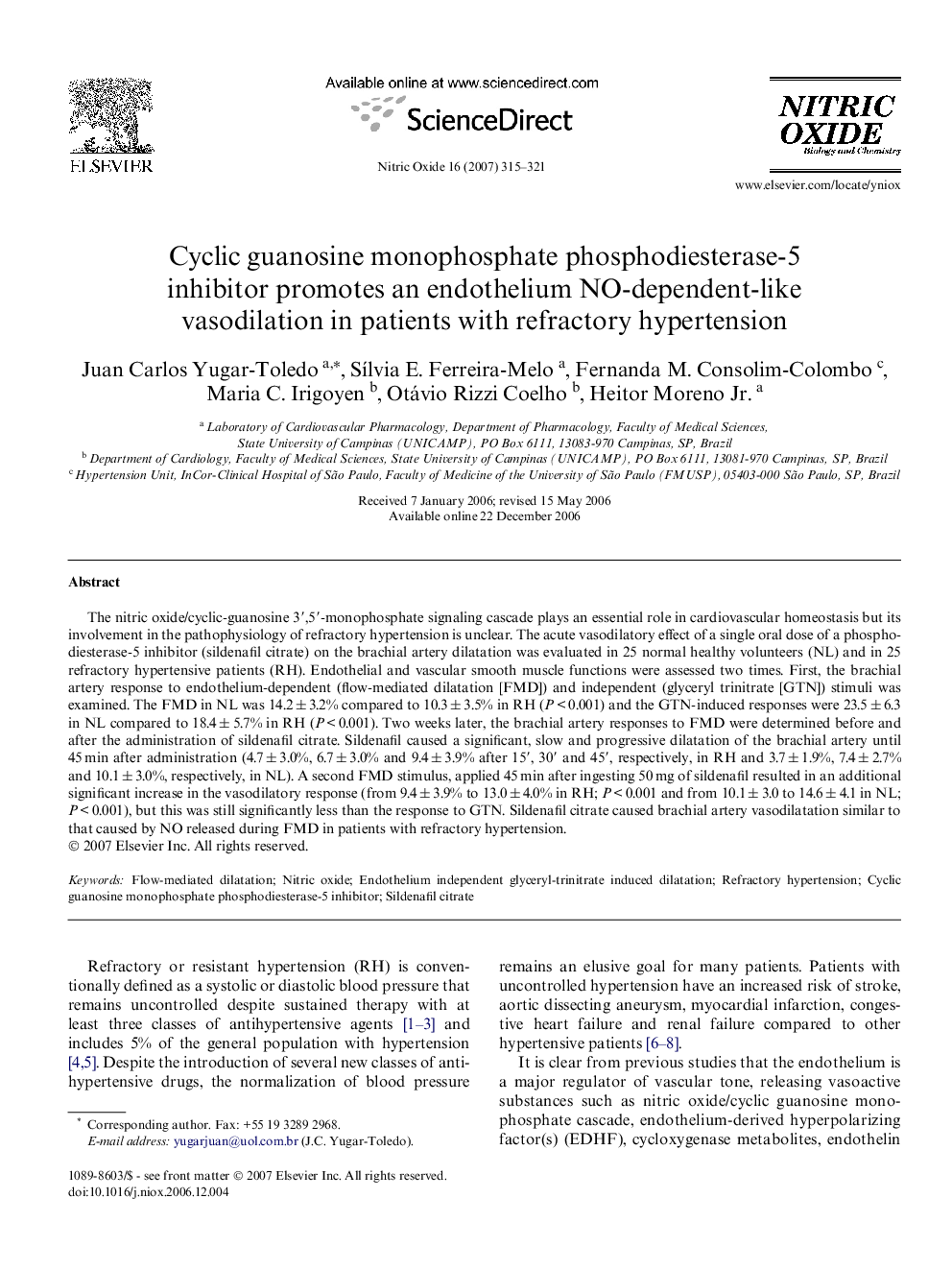| Article ID | Journal | Published Year | Pages | File Type |
|---|---|---|---|---|
| 2002053 | Nitric Oxide | 2007 | 7 Pages |
Abstract
The nitric oxide/cyclic-guanosine 3â²,5â²-monophosphate signaling cascade plays an essential role in cardiovascular homeostasis but its involvement in the pathophysiology of refractory hypertension is unclear. The acute vasodilatory effect of a single oral dose of a phosphodiesterase-5 inhibitor (sildenafil citrate) on the brachial artery dilatation was evaluated in 25 normal healthy volunteers (NL) and in 25 refractory hypertensive patients (RH). Endothelial and vascular smooth muscle functions were assessed two times. First, the brachial artery response to endothelium-dependent (flow-mediated dilatation [FMD]) and independent (glyceryl trinitrate [GTN]) stimuli was examined. The FMD in NL was 14.2 ± 3.2% compared to 10.3 ± 3.5% in RH (P < 0.001) and the GTN-induced responses were 23.5 ± 6.3 in NL compared to 18.4 ± 5.7% in RH (P < 0.001). Two weeks later, the brachial artery responses to FMD were determined before and after the administration of sildenafil citrate. Sildenafil caused a significant, slow and progressive dilatation of the brachial artery until 45 min after administration (4.7 ± 3.0%, 6.7 ± 3.0% and 9.4 ± 3.9% after 15â², 30â² and 45â², respectively, in RH and 3.7 ± 1.9%, 7.4 ± 2.7% and 10.1 ± 3.0%, respectively, in NL). A second FMD stimulus, applied 45 min after ingesting 50 mg of sildenafil resulted in an additional significant increase in the vasodilatory response (from 9.4 ± 3.9% to 13.0 ± 4.0% in RH; P < 0.001 and from 10.1 ± 3.0 to 14.6 ± 4.1 in NL; P < 0.001), but this was still significantly less than the response to GTN. Sildenafil citrate caused brachial artery vasodilatation similar to that caused by NO released during FMD in patients with refractory hypertension.
Related Topics
Life Sciences
Biochemistry, Genetics and Molecular Biology
Biochemistry
Authors
Juan Carlos Yugar-Toledo, SÃlvia E. Ferreira-Melo, Fernanda M. Consolim-Colombo, Maria C. Irigoyen, Otávio Rizzi Coelho, Heitor Jr.,
